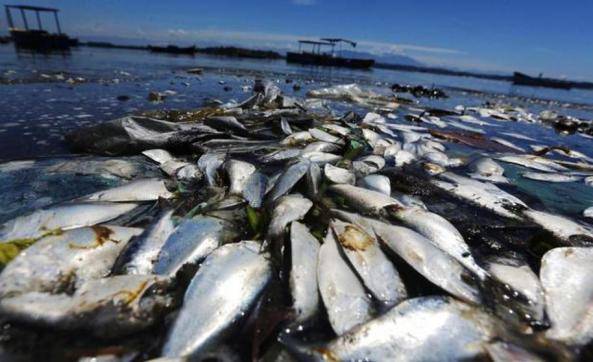The massive death of fish that occurs in the Paraná River at certain times of the year is a phenomenon of concern in Santa Fe. The river is not only a vital ecosystem for a wide variety of species, but also an important source of water for agriculture, consumption, and transportation.
This happens at certain times of the year, especially when extreme cold or heat temperatures affect the region. In response to this, during a debate held this week at the University City UNL in Santa Fe, the causes were explored.
Massive fish death in the Paraná River: what does science say
This phenomenon was discussed under the title “Massive fish deaths in the Paraná River due to extreme events: ecological processes and considerations for management”. It took place within the framework of the 83rd Scientific Communications Meeting of the Natural Sciences Association of the Littoral.
In the first place, a historical and geographical analysis of the reported fish mortality events, both in scientific literature and in the media, was presented. It was demonstrated that there are records of massive fish deaths, at least since 1911.
The fish mortality that is often seen in the Setúbal lagoon is due to “an ecological process that is natural,” explained Pablo Scarabotti, from the National Institute of Limnology (INALI – CONICET – UNL).
The high temperatures that occur during the summer cause a consequent rise in water temperature. “It accelerates the decomposition process of organic matter under the water, which decreases the dissolved oxygen and increases the metabolism of the fish, which require more oxygen,” he added.
And if this happens during a period of low water levels or drought, “the mortality tends to be massive,” he warned. “Sometimes there is a fourth factor which is the strong winds during summer storms, which often mix oxygenated surface water with oxygen-depleted deep waters containing toxic gases, resulting in mortality, especially in lagoons,” Scarabotti detailed.
Massive fish death: what happens with the cold
The presenters also displayed a detailed analysis of the dynamics of fish communities in a lagoon located in the alluvial plain of the middle Paraná River, to demonstrate how cold-induced mortality causes a profound change in species composition.
In cases of cold, the species that migrate from the northern basin during major floods are particularly affected. Also those that predominantly inhabit lotic environments, where temperature drops during winter are not as pronounced.
In this regard, the specialist listed three factors for a massive fish mortality in the Paraná River:
- An extraordinary rise during the summer, causing many species to move from the north to these latitudes
- This in turn causes other local species to move towards the lagoons
- If there is then a rapid drop and the winter cold is very intense (as in July), sensitive or less temperature-tolerant species die massively, especially in lagoons
Participants in the studies
As part of the round table, along with Scarabotti, Jorge Liotta from the Regional Museum of Natural Sciences “A. Scasso” in San Nicolás, who is also part of the Continental Fishing Coordination, Undersecretariat of Aquatic Resources and Fishing, Ministry of Agriculture, Livestock and Fishing of the Nation.
Also participating were Julia Mantinian from the Undersecretariat of Environment, Ministry of Tourism, Sports, and Environment of the Nation; and Danilo Demonte from the Center for Research in Bioscience and Environmental Technologies (CIBTA), Faculty of Science and Technology (FCyT), National University of Entre Ríos (UADER).
What is the Protocol for actions in the face of fish mortality
 Dead fish in the Paraná River.
Dead fish in the Paraná River.
The presenters also detailed the process that led to the creation of the so-called “Protocol for actions in the face of fish mortality,” carried out by a group of specialists within the framework of the CONICET Food Safety Network in conjunction with the Aquaculture Strengthening Network (RSA-REFACUA/CONICET).
Its purpose is to provide guidance on how to act before, during, and after a fish mortality event, as well as to standardize the information collection methodology in Argentine territory. Both in natural environments and in aquaculture establishments.
Do you already know our YouTube channel? Subscribe!

